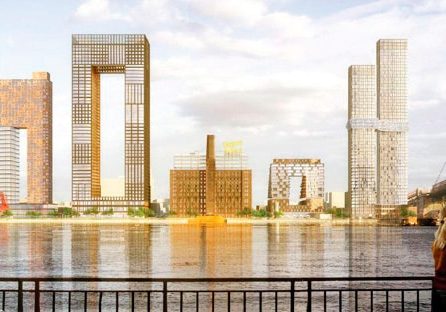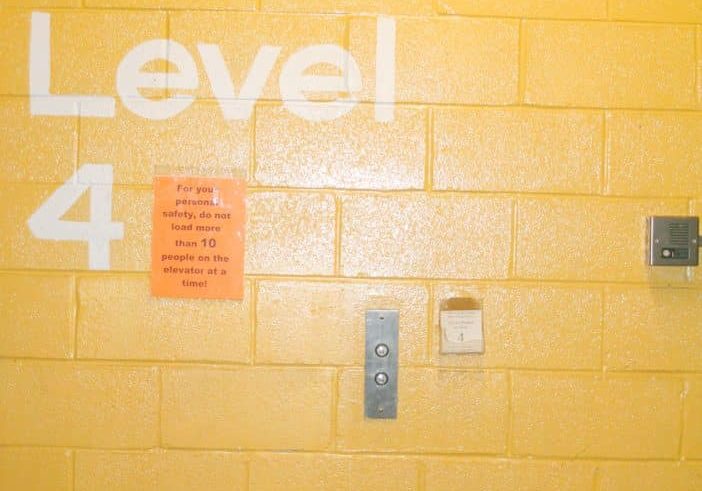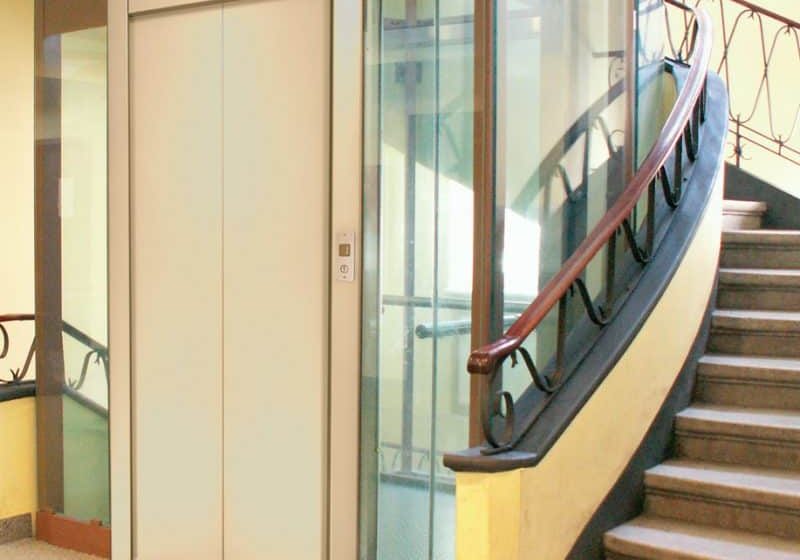Common Misconceptions Regarding Elevator Traffic Simulations
Apr 1, 2014
Elevator professionals and elevator customers look to both traditional, formula-based elevator traffic analysis and sophisticated elevator simulation programs to evaluate potential and existing elevator performance with regard to appropriate traffic handling. Sometimes, the terms and concepts involved in such work are misunderstood or misused. This article discusses five common misconceptions in an attempt to clarify elevatoring concepts, unify terminology and explain tool limitations.
Learning Objectives
After reading this article, you should have learned:
♦ The difference between handling capacity and arrival rate
♦ That increasing the speed of an elevator does not always translate to improved passenger service.
♦ Common methods of describing elevator traffic
♦ Which features automatic elevator-monitoring systems can and cannot offer.
♦ How an automatic elevator-monitoring system might seriously underreport passenger waiting times.
Elevator traffic simulations are frequently used by elevator professionals to evaluate proposed elevator configurations for new buildings or existing elevator configurations in standing buildings. In addition to building and elevator characteristics, these simulations require knowledge of the type and rate of elevator passengers as input and rely on specialized software to mimic the performance of elevators under the given input conditions. Elevator simulations can produce many types of output, including passenger waiting times and passenger times to destination, which allow the elevator professional to judge whether the elevator configuration can provide acceptable performance in the relevant building.
Observation indicates many elevator professionals and customers interested in elevator performance, analysis and simulation do not fully understand the concepts used, and misconceptions are common. This paper describes five common misconceptions in an attempt to clarify various terms and situations related to elevatoring and elevator traffic simulations.
Number One: “’Handling Capacity’ Is Simply How Many People Are Handled by the Elevator System in a Given Amount of Time.[1-4]”
Handling-capacity calculations have been used as key elevator performance criteria for many years. Traditionally, handling capacity is a formula-based metric and calculated under very specific performance assumptions. Handling-capacity calculations were used to determine how many elevators to put into a new building and to evaluate traffic considerations in existing buildings long before software-based elevator-simulation programs were available, and they are still used today. Unfortunately, the historical term “handling capacity” has become confused with the newer term “arrival rate,” which is the term applied to the rate of passengers arriving in the elevator lobbies as input to an elevator simulation. Many individuals now use the two terms interchangeably, which can be problematic.
Originally, handling capacity referred to the highest percentage of the building population the elevators could move in a 5-min. period, on average, given a specific set of building characteristics (e.g., number of floors in building and height of floors) and elevator characteristics (e.g., speed and size). Traditional handling capacity, due to the way it was calculated, was a steady state value, meaning that, in theory, the elevator system can serve the calculated volume of traffic for an ongoing period of time. Although handling capacity produces a steady state value, the calculated percentage is usually viewed as the peak capacity of the elevator system, and it was generally concluded that the peak capacity would only be reached for short periods of time each day, when numerous passengers all requested elevator service at the same time. Determining the correct number of elevators was based on determining whether the number of elevators being considered could produce the handling capacity needed to move the volume of people during peak elevator traffic.
Elevator traffic simulation studies, which use specially designed software to mimic the performance of elevators in a virtual building, use input data to define how many passengers will request elevator service during the simulation period. The input is determined prior to the simulation execution, unlike traditional handling capacity, which is an output (not an input) of the relevant formulae.
If an elevator professional designs a traffic input scenario that has a peak traffic of 10% of the building population, then execution of the simulation will output elevator performance metrics (e.g., average wait time) that can be used to determine whether the elevator system could handle a peak traffic of 10%. However, the results will not tell the professional whether 10% is the maximum the system can handle. If the elevator system can truly only handle a peak of 8% of the population, the simulation results with a traffic input pattern peaking at 10% will indicate that 10% cannot be handled. But, without further studies using different traffic inputs, the simulation only reveals that 10% cannot be handled; it does not indicate the actual maximum handling. Similarly, if the simulation results indicate the elevator system can handle 10% of the population, it does not automatically indicate whether it could actually handle more than 10% (or how much more than 10%).
It is easy to see why the term “handling capacity” might be confused with arrival rate, because the goal of defining a handling capacity is often to design a system that can handle the peak amount of traffic. So, if a simulation illustrates that the peak traffic expected in a building can be handled by the elevator configuration design, an individual may be tempted to call that peak amount of traffic the elevator system’s “handling capacity.” The confusion comes into being when multiple individuals are discussing the same elevator configuration but some are using the term “handling capacity” to mean the maximum handling capacity of a system, and others are using it to refer to a rate of traffic expected to arrive at the building. These may not be the same thing. A further point of confusion is whether the expectation is for a calculated handling-capacity value or a set of simulation results.
To avoid confusion, it is recommended that the term “traditional handling capacity” or “calculated handling capacity” be used to mean the value calculated by probability formulae, the term “maximum handling capacity” be used to indicate the point at which an elevator system can no longer successfully handle additional passengers, and the term “arrival rate” or “demand rate” be used to indicate the flow of passengers used as input to an elevator simulation.
Number Two: “Increasing the Elevator Speed Will Provide Better Service.”
Increasing the speed of an elevator will sometimes provide better service, but there are many times when it will not. If an elevator frequently travels through a long express zone, it is probable that increasing the speed of the elevator will give passengers a faster ride, and it will take less time to get to waiting hallway passengers. But, if the elevator makes frequent stops at floors near each other, then changing the speed may have little or no impact on the service. This is because when an elevator moves short distances, it does not have time to get to full speed. Elevators need to accelerate when leaving a stopped position and decelerate when arriving at the target floor. If the distance between the original and subsequent stops is short, the elevator may need to start decelerating before it has completed the full acceleration phase and reached full speed.
For example, if an elevator travels 4 m from a stopped position to a stopped position with a motion profile of 2 mps, 1 mps2 acceleration and 1.6 mps3 jerk, it will take the elevator approximately 4.5 s. to move from the first to the second position (assuming no start or machine delays). The highest speed the elevator will achieve is approximately 1.4 mps. If the speed of the elevator is increased to 3 mps, it will still take the elevator approximately 4.5 s. to cover the distance, and the highest speed it achieves will remain at 1.4 mps. Therefore, increasing the speed from 2 to 3 mps offers no performance advantage when the elevator travels short distances.
An elevator that travels 8 m with a speed of 2 mps (and other parameters held the same as the previous example) will take 6.4 s. to travel the distance, whereas increasing the speed to 3 mps will allow the elevator to go from start to stop in 6.1 s., a savings of 0.3 s. The distance of 8 m allows the elevator to achieve full speed, if only for a short time, when using a contract speed of 2 mps. When using a contract speed of 3 mps, the elevator starts to decelerate when it reaches a top speed of 2.2 mps and does not reach full speed. However, the longer distance of 8 m is still not sufficient distance to make a difference between elevator speeds if the speeds in question are 7 mps and 8 mps. In this case, neither motion profile would allow the elevator to reach full speed in 8 m, and there would be no performance difference between an elevator traveling 8 m at 7 mps, as opposed to one traveling 8 m at 8 mps. As with the 3-mps case, the elevator traveling at 7 or 8 mps starts to decelerate once it reaches the speed of 2.2 mps and does not have enough acceleration time to reach full contract speed.
Number Three: “The Description of “40-40-20” Tells Everything One Needs to Know about Elevator Traffic Input.[5]”
Elevator traffic is frequently described by a series of three numbers, the most common of which are “40-40-20” and “45-45-10.” The first number refers to the percentage of passengers traveling up from the lobby, the second number refers to the percent of the passengers traveling down to the lobby, and the third number refers to the percentage of passengers moving “interfloor,” such that neither their origin nor destination is the lobby. The three numbers must sum to 100%. This three-number shorthand is an excellent way to describe the percentages of each type of elevator traffic, but it does not indicate the duration or quantity of the traffic. Therefore, it is easy to misinterpret.
Sometimes, individuals, upon being asked to set up a “40-40-20” traffic-simulation scenario, automatically assume the simulation should use a traffic pattern that moves 40% of the building’s population up from the lobby in 1 hr., 40% of the building’s population down to the lobby in 1 hr. and 20% of the building’s population from one non-lobby to another non-lobby floor in the course of the same hour. While this might seem to be a good guess, “40-40-20” actually refers only to the destination percentages of the people being moved, not to whether the distribution is moving all of the building’s population or some percentage of the building’s population. Neither does “40-40-20” give the timeframe over which those people will use the elevators.
In order to accurately depict a traffic distribution to be used for a simulation, the “40-40-20” phrase needs to be used in conjunction with a number of people or a percentage of the building’s population, together with a timeframe. For example, it is appropriate to say, “Move 10% of the building’s population in each of 5 min. for a 45-min. period using a ‘40-40-20’ configuration,” or, “Move 550 people evenly over 30 min. using a ‘45-45-10’ configuration.”
The first example means that if you have a building with 1,000 people in it, then in each of nine periods of 5 min. each, there will be 100 people attempting to use the elevator (10% of 1000). 40% of those 100 people (i.e., 40 people) will be attempting to travel up from the lobby, another 40% of those people will be attempting to travel down from the lobby, and 20% of those people (i.e., 20 people) will be moving interfloor.
The second example means that if you have a building with 1,000 people in it, then only 55% of the population, or 550 people, will be using the elevator system over 30 min. Dividing 550 by six (the number of 5-min. periods in 30 min.) means that approximately 92 people will desire elevator service in each of those 5 min. Using the “45-45-10” configuration, 45% of those 92 people (i.e., approximately 42 people) want to travel up from the lobby, 45% (i.e., approximately 42 people) want to travel down to the lobby, and the remaining 10% (i.e., approximately nine people) will be moving interfloor.
Number Four: “Automated Elevator Monitoring Systems Are Great, Because They Can Tell You How Long People Wait for Elevators.”
This misconception applies mainly to automatic systems used to monitor traditional two-hall-call-button elevator configurations. Automatic elevator monitoring systems can be installed in most modern elevator environments to automatically and routinely collect and tabulate data related to elevator performance. These systems can be very helpful tools, but only if understood and used correctly.
Elevator monitoring systems can only track elements that have a mechanical or electronic component that can transmit information to the computer running the monitoring system. The time an elevator reaches a floor, the number of buttons pressed on a car-operating panel, and the time and location of an up hall call button being pressed, for example, can all be monitored. The weight of an elevator car can be monitored and, perhaps, used to estimate the number of people in the car. But, with the exception of destination-entry systems (in which each passenger indicates destination with an electronic device), the number of passengers waiting in the hallway for an elevator car is not monitored. Elaborate camera, video or radio-frequency identification tracking mechanisms that might allow for passenger tracking are currently too expensive for routine use in elevator performance monitoring.
The result of elevator monitoring limitations is that elevator monitoring systems track elevator response time, the elapsed time between a hall-call button being pressed at a floor and the arrival of an elevator to serve the demand at that floor, but cannot track passenger waiting times.
A passenger’s waiting time is the time between the passenger’s arrival in the elevator lobby until the elevator that will serve him or her arrives. It is easy to confuse the elevator response time with the passenger waiting time, because the time value is often the same for both the elevator and the person who actually presses the hall-call button.
A classic mistake in the use of automated monitoring systems is made when an evaluator looks at the automated monitoring report, sees that the average “wait” time is about 30 s. and assumes the elevator service is good. Although most systems report “wait” time, the systems are not really reporting passenger waiting times, but rather elevator arrival times. Even if the metrics are correctly labeled as “response times,” many evaluators assume that is the same as waiting times. If there is only one passenger waiting, then the elevator arrival time (difference between hall-call button being activated and elevator arriving at the floor) and the passenger waiting time (difference between passenger arriving in hallway and passenger entering elevator) are, basically, the same thing.
However, consider a situation where the first person arrives in the hallway and presses the hall-call button, then a second person arrives in the hallway 10 s. later. The elevator then arrives 20 s. later. Elevator arrival time is 30 s., as is the waiting time of the first passenger. The second passenger, however, has a waiting time of only 20 s. The average wait time of these two passengers is 25 seconds, a bit less than the reported “wait” time, which is actually the car arrival time of 30 s.
The waiting-time discrepancy described above overstates the actual average waiting time and may not be seen as a big problem. The real problem occurs when there is queuing, a situation where not all of the people waiting in the hallway can get into the next arriving car. In this case, the elevator arrival times will be reset each time an elevator arrives at the floor, but the actual passenger wait times for those passengers left behind will continue to accrue. This means the reported “wait” time from an automated monitoring system can seriously underreport waiting times during peak elevator traffic when queuing occurs. If the elevator performance is evaluated from the reported wait times under these conditions, the evaluation may be significantly incorrect.
Number Five: “It Is Easy to Figure Out a Building’s Traffic Pattern When You Have an Automated Elevator Monitoring System.”
It would be great if this were true, but usually, it is not. As described in section “Number Four,” automated monitoring systems are limited in their ability to track individual passengers, especially in conventional two-hall-call-button systems.
In a two-button system, only the first passenger arriving in the hallway going in a specific direction presses the hall-call button. Therefore, the monitoring system cannot know whether there is one person waiting for the elevator or numerous people waiting. Even after the waiting passengers get into the elevator and press the car-call buttons inside the car, it is difficult to know how many people entered the car and how many were left behind in the hallway because the car was too crowded. Only the first individual going to a specific floor will be registered as pressing the car-call button for that floor, and if that button had already been pressed prior to the car’s arrival, another button push will not be registered. Therefore, the monitoring system has no way to precisely determine how many people entered the elevator or where each of them is going. Arrival rates and passenger-specific origin/destinations combinations are key factors of a building’s traffic pattern. Automated monitoring systems (which count hall calls, car calls and car arrival times, and cannot track per passenger arrival times, car entry times or destinations) cannot easily produce accurate building-traffic patterns.
In a destination-entry system, it is more likely that the automated monitoring reports will be more correct. This is because in a destination-entry system, each passenger is expected to use the destination-entry device, and the system will be able to monitor each passenger’s arrival time, origin floor and destination floor at the entry device. However, it has been consistently observed that in actual practice, some people do not enter their destination, relying instead on destinations that have been entered previously or by someone else in their group. Also, some individuals enter their destination multiple times in the hopes of an elevator arriving more quickly and/or a less crowded elevator. In a destination-entry system, the more people who use the system contrary to its design (i.e., where each passenger enters one and only one destination), the less accurate any traffic pattern determined by monitoring destination entries will be.
Learning-Reinforcement Questions
Use the below learning-reinforcement questions to study for the Continuing Education Assessment Exam available online at www.elevatorbooks.com or on p. 107 of this issue.
♦ What impact does the arrival rate (i.e., input traffic pattern) have on elevator simulation studies?
♦ How is arrival rate different from handling capacity?
♦ In describing elevator traffic, which characteristics must be considered?
♦ Why is the distance between stops important in considering nominal elevator speed?
♦ Automatic elevator-monitoring systems only have information that can be mechanically or electronically sensed. What is the impact of this on the metrics that can be reported?
References
[1] G.R. Strakosch, The Vertical Transportation Handbook. John Wiley & Sons, Inc., New York (1998).
[2] G.R. Strakosch, Vertical Transportation: Elevators and Escalators, Second Edition. John Wiley & Sons, Inc., New York (1983).
[3] NEIEP Elevator Terms, An Illustrated Glossary. National Elevator Industry Educational Program. United States of America (1987).
[4] G. Barney, Elevator Traffic Handbook, Theory and Practice. Spon Press, London (2003).
[5] K. Butcher, editor, CIBSE Guide D: 2010, Transportation Systems in Buildings, The Chartered Institution of Building Services Engineers, London (2010).
Get more of Elevator World. Sign up for our free e-newsletter.









